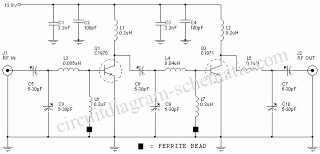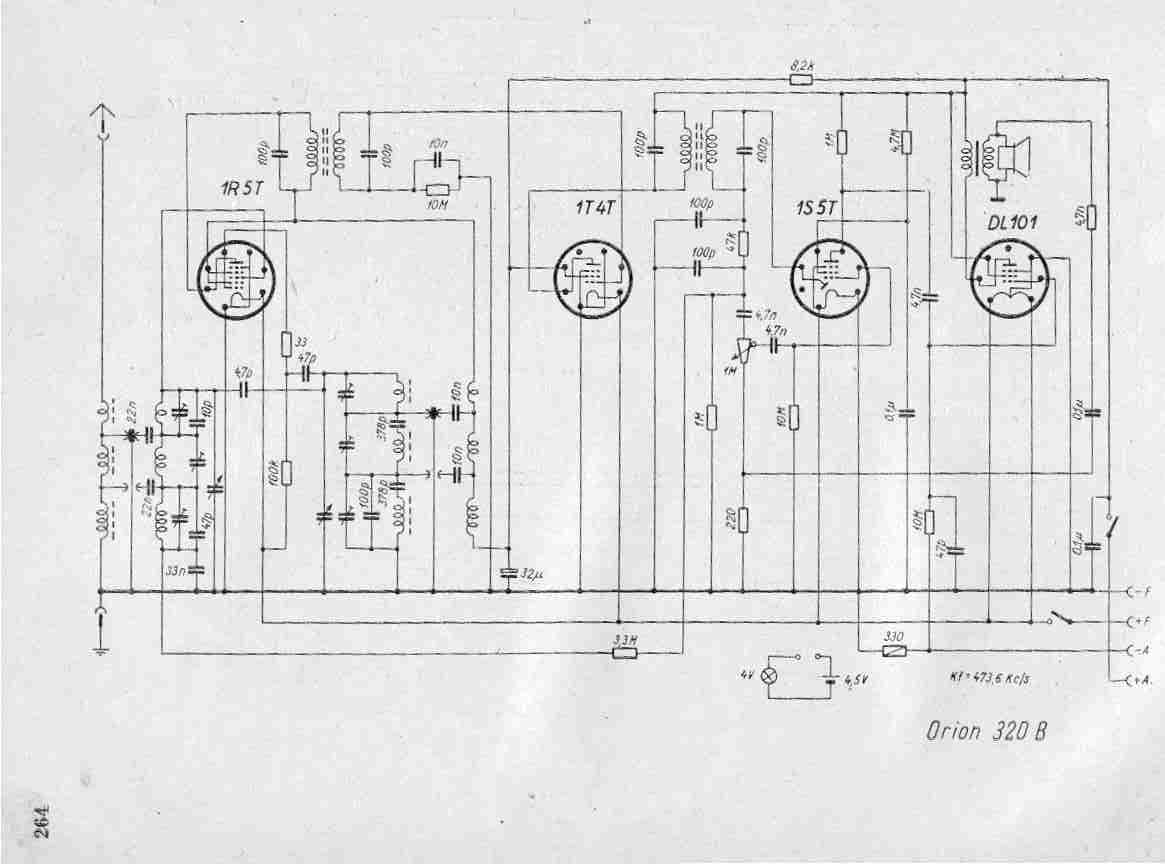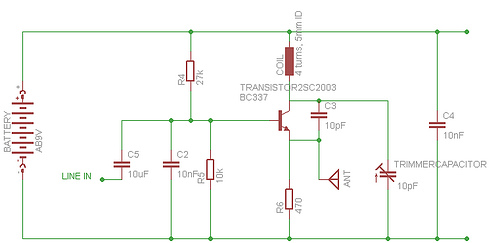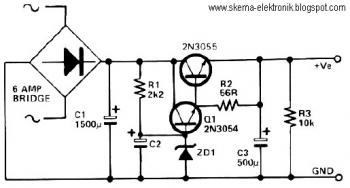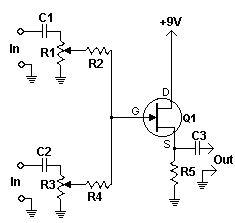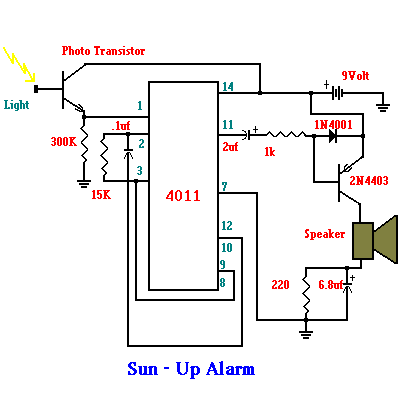
schematics
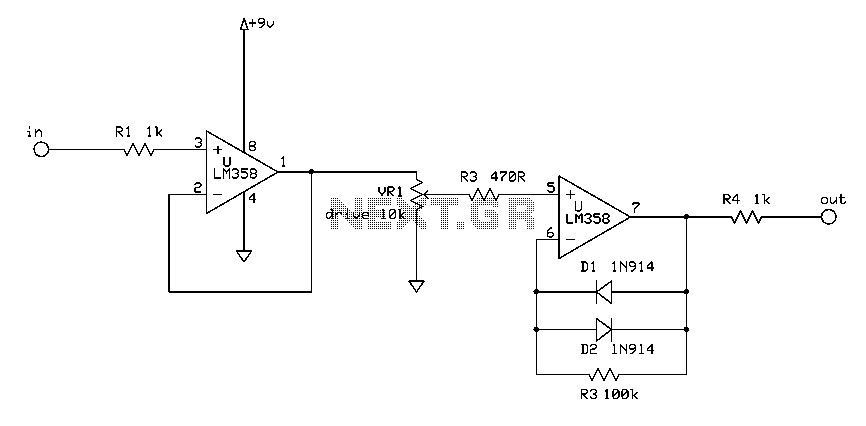
This circuit is a resonant twin-T filter. Its purpose is to provide a reasonable imitation of a low-pass response, which it achieves effectively. The schematic illustrates two variations: one with self-oscillation and one without. The version built includes oscillation. While breadboarding it with a dual op-amp (an NE5532), an overdrive-able input buffer/preamp was added, which functioned well. The circuit is temporarily housed in a plastic box without a lid for use with a device named Loid. It will eventually be integrated into a larger project. The potentiometers from left to right are gain, cutoff, and resonance. An audio demo is available, showcasing the filter being fed with an XOR pseudo-ring mod, which receives two square waves from Schmitt trigger oscillators. At 1:06, the input is removed, revealing the filter's self-oscillation (modulated via a 4069 LFO). These circuits are currently on Loid's breadboard extension. Due to space limitations in the containers and nearing the power supply capacity, additional components will be added soon. In addition to the modules discussed, plans include a 4017-based sequencer, a noise source, a couple of VCOs, and potentially more. If the plan proceeds as intended, the outcome will be a utility "brain-box" that also functions as a portable sequencer and beat box. The simple VCA is documented in this series of pages towards the back of the book. This project is related to the WP-20 mini-synth, which Ray Wilson was involved with before the establishment of MFOS. Logic-only VCA and AREG are discussed in this thread, with the intention of using only the envelope generator (EG). An LM358 was utilized for the op-amp. A similar AREG exists in the WP-20 book, based on the LM3900 and utilizing a 555 as a gate generator. A recording demonstrates the AREG functioning as a highly controllable LFO, using a slow square wave as the trigger/gate source to modulate the frequency of a CD4046 VCO. Initially, a 40106-based square LFO serves as the gate, which is later switched to a divider for slower modulation. There is no recording of the VCA, as it simply controls the volume.
The resonant twin-T filter circuit operates on the principle of creating a notch filter that can also exhibit resonant characteristics. This is achieved through the use of resistors and capacitors arranged in a twin-T configuration, which allows for selective frequency attenuation. The inclusion of an NE5532 dual op-amp facilitates signal amplification and the potential for overdrive effects, enhancing the circuit's versatility in audio applications.
The circuit's design includes three potentiometers: the gain pot adjusts the overall output level, the cutoff pot determines the frequency at which the filter begins to attenuate signals, and the resonance pot controls the feedback within the filter, allowing for pronounced peaks at the cutoff frequency. This feedback can lead to self-oscillation, which is particularly useful in synthesizer applications where unique sound textures are desired.
The integration of Schmitt trigger oscillators generates square wave signals that feed into the filter, creating complex audio effects when combined with the XOR pseudo-ring modulator. The ability to remove the input and hear the self-oscillation showcases the filter's capability to produce sustained tones, which can be manipulated further using the modulation capabilities provided by the 4069 LFO.
Future expansions of the circuit include the addition of a 4017-based sequencer, which will enable rhythmic patterns and control over multiple outputs. The inclusion of a noise source and several voltage-controlled oscillators (VCOs) will enhance the sound design possibilities, allowing for a broader range of audio experimentation.
The design is intended to be compact and modular, making it suitable for integration into larger systems or standalone use. The use of an LM358 op-amp and the reference to the WP-20 mini-synth indicates a focus on simplicity and functionality, which is essential for educational projects and DIY synthesizer enthusiasts. The overall goal is to create a versatile utility device that can serve multiple roles in electronic music production, emphasizing the importance of modular design in modern synthesizer architecture.This circuit is a resonant twin-t filter. In this circuit, its purpose (according to the creator), is to give a decent fake lowpass response , which it does fairly well. Tim`s schematic shows two variations, one with self-oscillation, and one without. I built the one with oscillation. Since I was breadboarding it with a dual op amp (an NE5532, to be exact), I tried adding an overdrive-able input buffer/preamp, which worked pretty well, so I went with it. I had a plastic box sitting around with no lid, so I`ve temporarily built it into that for use with Loid.
It will eventually become part of the piece I mentioned in the last post. Pots from left to right are: gain, cutoff, resonance. Here`s an audio demo, with the Q&D filter being fed with an XOR pseudo-ring mod, which in turn is being fed with two squarewaves from Schmitt trigger oscillators- at 1:06, the input is removed, and you can hear just the filter`s self-oscillation (modulation via 4069 LFO): Audio clip: Adobe Flash Player (version 9 or above) is required to play this audio clip. Download the latest version here. You also need to have JavaScript enabled in your browser. These circuits currently exist on Loid`s breadboard extension. As I`m out of space in the containers, and am also reaching the limit of the power supply I`m using, Loid will be getting another piece added soon.
In addition to the modules discussed here, I also plan to add a 4017-based sequencer, a noise source, a couple of VCO`s, and most likely some other stuff. If all goes according to the current plan, the result will be a sort of utility/ brain-box , which will also function as a take-away sequencer and beat box.
The simple VCA is in this series of pages, towards the back of the book . This is from a project Ray Wilson was involved in before MFOS came into being, called the WP-20 mini-synth. Logic-only VCA and AREG at this thread. I will only be using the EG. I used an LM358 for the op amp. There is also a similar AREG in the WP-20 book which is based on the LM3900 and uses a 555 as a gate generator.
The following simple recording shows the AREG being used as a highly controllable LFO, using a slow squarewave as the trigger/gate source, modulating the frequency of a CD4046 VCO. At first, a 40106-based square LFO is being used directly as the gate, later I switch it over to a divider for even slower modulation.
Audio clip: Adobe Flash Player (version 9 or above) is required to play this audio clip. Download the latest version here. You also need to have JavaScript enabled in your browser. No recording of the VCA, but it just controls the volume, nothing super exclone distortion unit,be at least one 386-based10k audio taper pot to lay this audio clip. Dohere). Time for the aazy stuff to give a pseudo-random source: Audio clip: Adobe Flash Playerk I`ll be looking elsewt the difference: Audio clip: Adobere something good will
🔗 External reference
The resonant twin-T filter circuit operates on the principle of creating a notch filter that can also exhibit resonant characteristics. This is achieved through the use of resistors and capacitors arranged in a twin-T configuration, which allows for selective frequency attenuation. The inclusion of an NE5532 dual op-amp facilitates signal amplification and the potential for overdrive effects, enhancing the circuit's versatility in audio applications.
The circuit's design includes three potentiometers: the gain pot adjusts the overall output level, the cutoff pot determines the frequency at which the filter begins to attenuate signals, and the resonance pot controls the feedback within the filter, allowing for pronounced peaks at the cutoff frequency. This feedback can lead to self-oscillation, which is particularly useful in synthesizer applications where unique sound textures are desired.
The integration of Schmitt trigger oscillators generates square wave signals that feed into the filter, creating complex audio effects when combined with the XOR pseudo-ring modulator. The ability to remove the input and hear the self-oscillation showcases the filter's capability to produce sustained tones, which can be manipulated further using the modulation capabilities provided by the 4069 LFO.
Future expansions of the circuit include the addition of a 4017-based sequencer, which will enable rhythmic patterns and control over multiple outputs. The inclusion of a noise source and several voltage-controlled oscillators (VCOs) will enhance the sound design possibilities, allowing for a broader range of audio experimentation.
The design is intended to be compact and modular, making it suitable for integration into larger systems or standalone use. The use of an LM358 op-amp and the reference to the WP-20 mini-synth indicates a focus on simplicity and functionality, which is essential for educational projects and DIY synthesizer enthusiasts. The overall goal is to create a versatile utility device that can serve multiple roles in electronic music production, emphasizing the importance of modular design in modern synthesizer architecture.This circuit is a resonant twin-t filter. In this circuit, its purpose (according to the creator), is to give a decent fake lowpass response , which it does fairly well. Tim`s schematic shows two variations, one with self-oscillation, and one without. I built the one with oscillation. Since I was breadboarding it with a dual op amp (an NE5532, to be exact), I tried adding an overdrive-able input buffer/preamp, which worked pretty well, so I went with it. I had a plastic box sitting around with no lid, so I`ve temporarily built it into that for use with Loid.
It will eventually become part of the piece I mentioned in the last post. Pots from left to right are: gain, cutoff, resonance. Here`s an audio demo, with the Q&D filter being fed with an XOR pseudo-ring mod, which in turn is being fed with two squarewaves from Schmitt trigger oscillators- at 1:06, the input is removed, and you can hear just the filter`s self-oscillation (modulation via 4069 LFO): Audio clip: Adobe Flash Player (version 9 or above) is required to play this audio clip. Download the latest version here. You also need to have JavaScript enabled in your browser. These circuits currently exist on Loid`s breadboard extension. As I`m out of space in the containers, and am also reaching the limit of the power supply I`m using, Loid will be getting another piece added soon.
In addition to the modules discussed here, I also plan to add a 4017-based sequencer, a noise source, a couple of VCO`s, and most likely some other stuff. If all goes according to the current plan, the result will be a sort of utility/ brain-box , which will also function as a take-away sequencer and beat box.
The simple VCA is in this series of pages, towards the back of the book . This is from a project Ray Wilson was involved in before MFOS came into being, called the WP-20 mini-synth. Logic-only VCA and AREG at this thread. I will only be using the EG. I used an LM358 for the op amp. There is also a similar AREG in the WP-20 book which is based on the LM3900 and uses a 555 as a gate generator.
The following simple recording shows the AREG being used as a highly controllable LFO, using a slow squarewave as the trigger/gate source, modulating the frequency of a CD4046 VCO. At first, a 40106-based square LFO is being used directly as the gate, later I switch it over to a divider for even slower modulation.
Audio clip: Adobe Flash Player (version 9 or above) is required to play this audio clip. Download the latest version here. You also need to have JavaScript enabled in your browser. No recording of the VCA, but it just controls the volume, nothing super exclone distortion unit,be at least one 386-based10k audio taper pot to lay this audio clip. Dohere). Time for the aazy stuff to give a pseudo-random source: Audio clip: Adobe Flash Playerk I`ll be looking elsewt the difference: Audio clip: Adobere something good will
🔗 External reference
